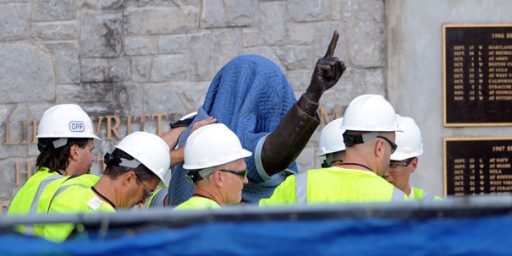Critical Homeland Security Database is Flawed
A study by Homeland Security Inspector General Richard Skinner has concluded that the Department of Homeland Security’s database of critical infrastructure is fundamentally flawed.
A Homeland Security database of national monuments, chemical plants and other structures vulnerable to terror attacks is too faulty to accurately help divide federal funds to states and cities, according to the department’s internal watchdog.
[…]
The database “is not an accurate representation of the nations CI/KR (critical infrastructure and key resources),” inspectors concluded. Additionally, the database “is not yet comprehensive enough to support the management and resource allocation decision-making envisioned by the National Infrastructure Protection Plan.”
The report noted that Indiana has 8,591 assets listen in the database — more than any other state and 50 percent more than New York. New York had 5,687 listed. It did not detail which ones, but the Homeland Security assessment of New York this year failed to include Times Square, the Empire State Building, the Brooklyn Bridge or the Statue of Liberty as a national icon or monument. [emphasis added]
Makes you feel safer already, doesn’t it? It’s nice to know that a mere four years after the Department of Homeland Security was founded, they still haven’t managed to figure out that the Statue of Liberty is a national freaking monument.
I keep getting emails in my inbox from the GOP explaining how the Bush Administration is “serious” about terrorism. But how can a person honestly believe that if, after four years, they still haven’t even identified critical infrastructure that might serve as potential terrorist targets? Hell, your average 6 year old could get the Statue of Liberty and the Empire State Building right. If DHS hasn’t even identified potential terrorist targets, how can they expect to defend those sites?
Update: Homeland Security Watch has more on the “garbage in, garbage out” nature of the critical infrastructure database.






I have a conceptual problem with critical infrastructure surveys ever since I was involved with them in 1999. Really what does listing a bunch of potential targets do for you if you don’t do anything with the list? And what can you do besides restrict access? Sorry folks, all the National Parks are potential targets, so we can’t let you visit! Do that and they have won. 90% of these lists are the obvious, and if they miss an obvious, so what? This is like a Letterman Top 10 list. Bureaucrats think making lists is a positive action.
However, there is a value to making these lists on occasion. An example I can think of is a manhole cover in a city I will not name. Under this manhole are critical telephone and Internet connections (nodes) in the middle of the country. I know that today because of a similar review, this manhole is alarmed, and has surveillance cameras should the alarm go off.
My take on the IG report, at my homeland security-focused blog:
http://www.hlswatch.com/2006/07/12/dhs-critical-assets-amish-popcorn-kangaroos-and-trees-of-mystery/
hlswatch in the comment above has an interesting link in his/her/their blog to the NYT’s article on this
http://www.nytimes.com/2006/07/12/washington/12assets.html?_r=1&oref=slogin
I stand corrected in my assessment. This stuff matters – the more crap you can put into the database, the more money you get. If your locality can’t figure out that your petting zoo is a terrorist target, no money for you.
hlswatch above has more.
What! Another government department is revealed to be inept and incompetent! Say it isn’t so.